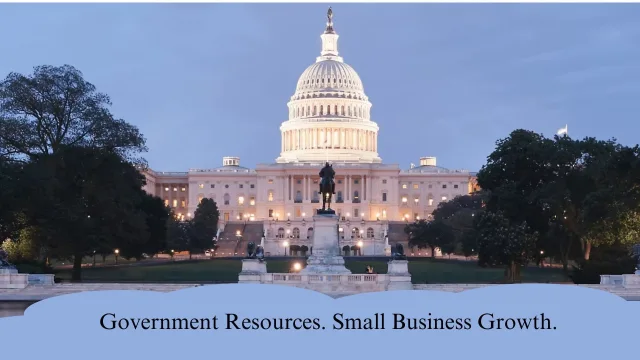trending
neon
Cirque du Soleil offers summer ticket deals
dining out
Celebs ditch the Strip for iconic Henderson restaurant
july 
trending
neon
Cirque du Soleil offers summer ticket deals
dining out
Celebs ditch the Strip for iconic Henderson restaurant
july 

As labor shortages continue to impact various industries, U.S. companies are accelerating the adoption of automation and technology. From AI-driven customer service to robotic manufacturing, businesses are leveraging innovative solutions to maintain productivity and efficiency




The U.S. labor market has faced ongoing workforce shortages across multiple sectors, from manufacturing and logistics to healthcare and retail. With fewer workers available, companies are increasingly turning to automation and advanced technology to bridge the gap, maintain efficiency, and reduce operational costs. The rise of artificial intelligence (AI), robotics, and machine learning is reshaping how businesses operate and compete in a challenging economic landscape.
Several factors have contributed to the persistent labor shortages:
While labor shortages are widespread, some industries have been hit harder than others:
To adapt to the ongoing labor crisis, businesses are investing heavily in automation and AI-driven solutions:
✅ Robotic Process Automation (RPA): Companies are using AI-powered software to automate repetitive tasks, reducing the need for human intervention. ✅ Autonomous Vehicles and Drones: Logistics firms are experimenting with driverless trucks and drone deliveries to optimize supply chains. ✅ AI Chatbots and Virtual Assistants: Customer service roles are increasingly being handled by AI-driven chatbots, reducing the need for human support. ✅ Smart Manufacturing: Factories are integrating robotics and machine learning to streamline production lines. ✅ Self-Checkout and Contactless Payment: Retailers are implementing automated checkout systems to reduce dependency on cashiers.
While automation presents numerous advantages, it also comes with challenges:
Pros: ✔️ Increased Efficiency: Automation reduces downtime and enhances productivity. ✔️ Cost Savings: Companies save on labor costs and minimize human error. ✔️ Improved Customer Experience: AI and robotics enable faster and more consistent service.
Cons: ❌ Job Displacement: Increased automation may lead to layoffs and workforce reductions. ❌ High Implementation Costs: Investing in automation requires significant upfront capital. ❌ Technical Challenges: AI and robotics require continuous updates and maintenance.
As technology advances, businesses will continue to integrate automation to address labor shortages. However, striking a balance between automation and human employment will be crucial. Companies must invest in reskilling programs and workforce development to prepare employees for the evolving job market.
As labor shortages continue to impact various industries, U.S. companies are accelerating the adoption of automation and technology. From AI-driven customer service to robotic manufacturing, businesses are leveraging innovative solutions to maintain productivity and efficiency
the latest

Mergers and Acquisitions Surge in U.S. Despite Economic Uncertainty
Despite economic challenges, mergers and acquisitions (M&As) in the U.S. business sector have surged. Companies are leveraging strategic deals to enhance market presence, expand operations, and drive growth in a volatile economic landscape

U.S. Companies Respond to Labor Shortages with Automation and Technology
As labor shortages continue to impact various industries, U.S. companies are accelerating the adoption of automation and technology. From AI-driven customer service to robotic manufacturing, businesses are leveraging innovative solutions to maintain productivity and efficiency

Stock Buybacks and the Impact on Corporate Investments in the U.S.
Stock buybacks have become a dominant strategy for U.S. corporations, influencing investment decisions, shareholder returns, and economic growth. While buybacks boost stock prices and reward investors, critics argue they divert funds from research, expansion, and employee wages

Small Business Investment: Government Initiatives to Drive Growth
The U.S. government has launched new initiatives to increase investment in small businesses, aiming to drive economic growth and innovation. These policies include tax incentives, grants, and funding programs designed to support entrepreneurs and startups

Venture Capital Investment in Startups Reaches New Heights in 2025
Venture capital investment in startups has surged to unprecedented levels in 2025, fueling innovation across various industries. With increased funding, early-stage companies are experiencing rapid growth, particularly in technology, healthcare, and green energy sectors

Corporate America Faces Challenges Amid Global Supply Chain Disruptions
Global supply chain disruptions continue to challenge Corporate America, affecting production, pricing, and consumer demand. As businesses navigate logistical bottlenecks, rising costs, and geopolitical tensions, the U.S. economy faces significant hurdles in maintaining stability and growth

Biden Administration Unveils New Infrastructure Investment Plan
The Biden administration has announced a comprehensive infrastructure investment plan aimed at revitalizing America's transportation, energy, and water systems. This article provides key insights into the plan's objectives, funding allocations, and anticipated impacts on the nation's economy and communities

Understanding U.S. Investment Policies and Their Impact
Explore how U.S. investment policies shape financial markets, economic growth, and business strategies, offering both opportunities and challenges for investors

The Link Between U.S. Investment Policies and Economic Growth
Recent U.S. investment policies are driving economic growth, influencing global markets, trade, and financial stability. This article explores their impact on businesses and investors